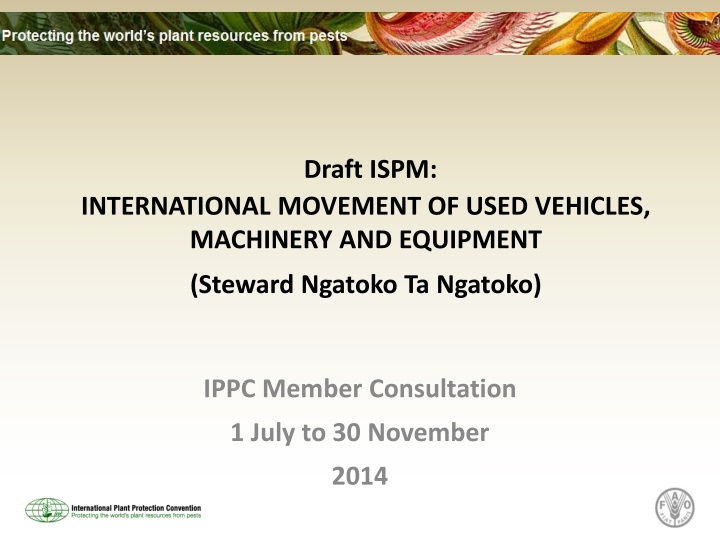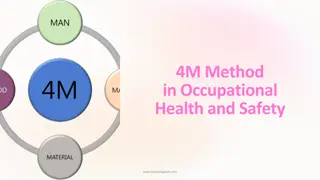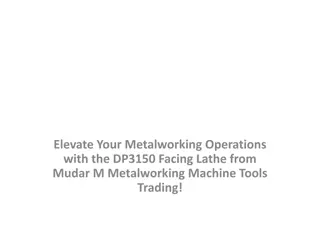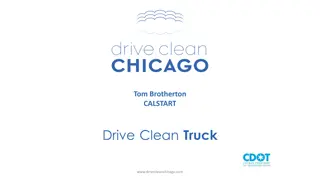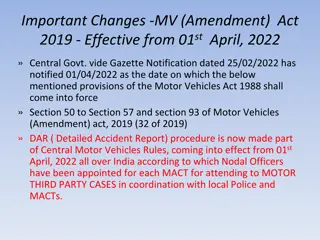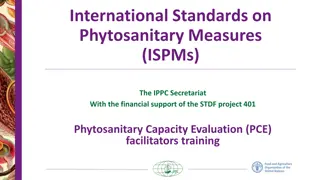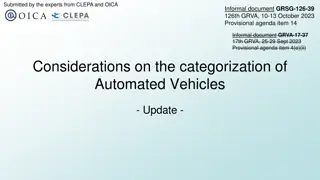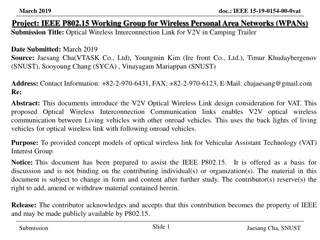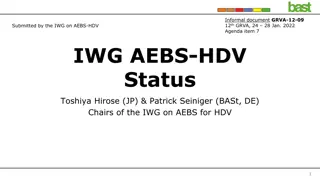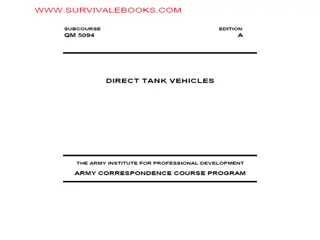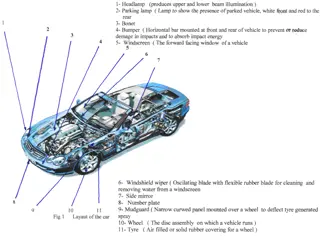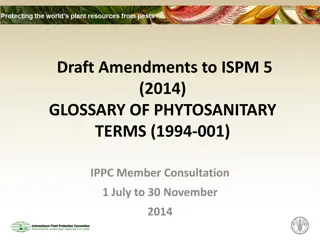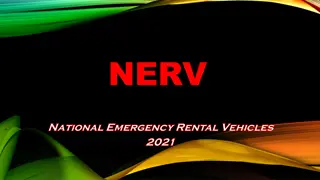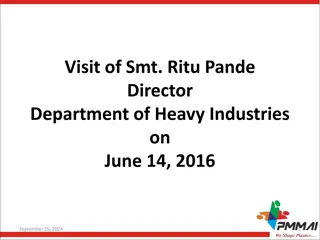Draft ISPM: International Movement of Used Vehicles, Machinery, and Equipment (Steward Ngatoko Ta Ngatoko)
This draft ISPM addresses the pest risks associated with the global movement of used vehicles, machinery, and equipment, offering phytosanitary measures for various sectors. It outlines the regulatory history, considerations, and appendices for reference. Specific guidance is provided to NPPOs regarding pest risks and necessary measures for safe international movement.
Uploaded on Oct 10, 2024 | 4 Views
Download Presentation

Please find below an Image/Link to download the presentation.
The content on the website is provided AS IS for your information and personal use only. It may not be sold, licensed, or shared on other websites without obtaining consent from the author.If you encounter any issues during the download, it is possible that the publisher has removed the file from their server.
You are allowed to download the files provided on this website for personal or commercial use, subject to the condition that they are used lawfully. All files are the property of their respective owners.
The content on the website is provided AS IS for your information and personal use only. It may not be sold, licensed, or shared on other websites without obtaining consent from the author.
E N D
Presentation Transcript
Draft ISPM: INTERNATIONAL MOVEMENT OF USED VEHICLES, MACHINERY AND EQUIPMENT (Steward Ngatoko Ta Ngatoko) IPPC Member Consultation 1 July to 30 November 2014
Background 2006-04 CPM-1 added topic Guidelines for the movement of used machinery and equipment (2006-004) 2007-11 SC approved draft specification for member consultation 2007-12 Draft specification submitted to member consultation 2009-05 SC approved specification 48 2013-05 Expert Working Group (EWG) met and drafted ISPM 2014-05 SC approved draft ISPM for member consultation 2014-07 member consultation
General Considerations This standard identifies and categorizes pest risks associated with the international movement of used vehicles, machinery and equipment. It describes phytosanitary measures that may be applied to used vehicles, machinery and equipment utilized in agriculture, forestry, horticulture, earth moving, surface mining and waste management and to used military vehicles, machinery and equipment. This standard does not cover vehicles or other conveyances moving under their own motive power over international borders.
General Considerations (contd) Appendices SC recommended that appendices (APPENDIX 1, 2, & 3) are for reference purposes only and is not a prescriptive part of the standard. APPENDIX 1: Guidance for the international movement of used military vehicles, machinery and equipment. APPENDIX 2: Examples of pests that may be associated with the movement of used vehicles, machinery and equipment. APPENDIX 3: Examples of used vehicles, machinery and equipment, ranked in order of decreasing pest risk together with possible phytosanitary measures.
Drafting Issues Used vehicles, machinery and equipment are regulated articles frequently traded or otherwise moved between countries. They may have been used in agriculture, forestry and horticulture, as well as for construction, industrial purposes, mining and waste management. They can also be used military vehicles, machinery and equipment. Depending on their use before export, they may have become contaminated with pests. When moved internationally as either a traded commodity or an operational relocation (e.g. in the case of custom harvesters) the used vehicles, machinery and equipment can carry soil, pests, plant debris, and seeds and plants as pests, and they may therefore present a pest risk to the importing country. Depending on their use in the country of import, they may introduce quarantine pests to agricultural, forested, wilderness or other areas. Specific guidance is needed for NPPOs regarding the pest risks associated with the movement of used vehicles, machinery and equipment and the phytosanitary measures that may be required in order to facilitate their safe movement.
Drafting issues (contd) When importing machinery an NPPO needs to assess the risk of such imports. The general factors of a risk analysis are described in ISPMs 2 and 11. However, there are a number of specific factors to take into account when undertaking a pest risk analysis (PRA) for machinery. Depending on the type of machinery one or more types of contaminants may be associated with it. The assessment should consider hidden areas within the machinery that may carry contaminants. When deciding an appropriate risk management option the NPPO should ask what options are available to manage the risk and look at how effective each option will be. Information should be gathered from multiple sources and each assessed as to their effectiveness. The country should also consider whether it is best to action prior to shipment or on-arrival. Various factors taken from the risk assessment and operational considerations should be taken into account when making these decisions.
Other relevant information Definitions of phytosanitary terms used in this standard can be found in ISPM 5. Pest risk analysis (PRA) for used vehicles, machinery and equipment should be performed in accordance with ISPM 2:2007 and ISPM 11:2013 to technically justify any requirements for phytosanitary measures.
